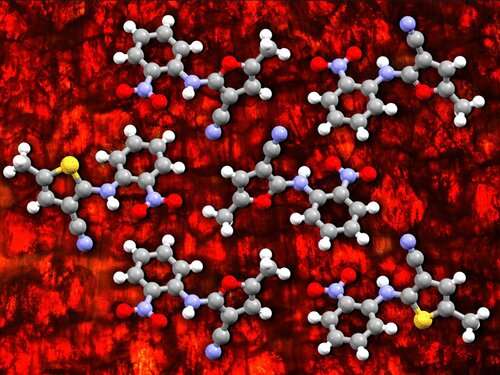July 30, 2020 report
Two more polymorphs found for red-orange-yellow

A trio of researchers at Université de Montréal has discovered two more polymorphs for ROY, bringing the total to 10. In their paper published in Journal of the American Chemical Society, Alexandre Levesque, Thierry Maris and James Wuest, describe the process they used to create the polymorphs and why they believe they have found a new way to increase polymorphic diversity.
Polymorphs are compounds that have more than one crystalline form—they have the same composition but different structures and properties, such as different colors and melting points. Prior research has shown many polymorphs to have unique and desirable properties, among them solubility and stability. Such properties have led to their widespread use in pharmaceutical applications.
Some chemists have suggested that all compounds are polymorphic, but exploring the possibilities has been challenging due to the difficulty in developing reliable crystallization processes. But the value of polymorphs is great enough to push researchers to search for more polymorphs in compounds that are already in use—one such example is ROY (red/orange/yellow)—a precursor to olanzapine, a drug used to treat mental illnesses. Up until now, it had eight known polymorphs. In this new effort, the researchers have developed a way to create two more, bringing the total to 10. The researchers also note that the current method for crystallizing compounds of interest is via exhaustive screening, which is very labor intensive. They suggest the process they used (which is based on mixed crystal seeding using molecular mimics) holds promise as a valuable tool in the field because it has opened the door to increasing polymorphic diversity.
The work by the team in Canada involved preparing multiple compounds that were close to ROY in shape and molecular size, but had slightly different compositions. They then subjected each of the compounds to saturated ROY solutions while mixing in crystal seeding products. Doing so resulted in structural changes to the compounds and crystallization in a new form—they describe the polymorphs as pale orange needles. The researchers report that their efforts have allowed ROY to reclaim the title as the compound with the most polymorphs, according to the Cambridge Structural Database.
More information: Alexandre Lévesque et al. ROY Reclaims Its Crown: New Ways To Increase Polymorphic Diversity, Journal of the American Chemical Society (2020). DOI: 10.1021/jacs.0c04434
Journal information: Journal of the American Chemical Society
© 2020 Science X Network





















